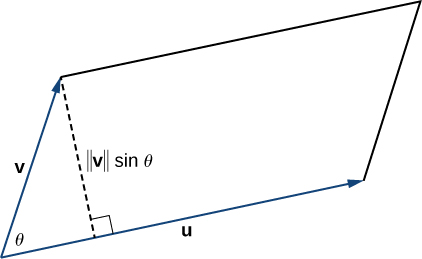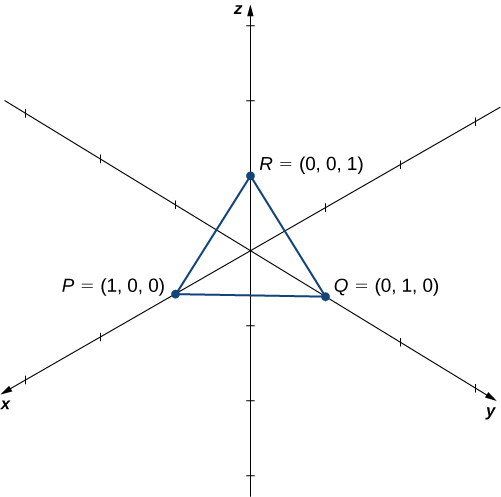| << Chapter < Page | Chapter >> Page > |
Evaluate the determinant
We have
Technically, determinants are defined only in terms of arrays of real numbers. However, the determinant notation provides a useful mnemonic device for the cross product formula.
Let and be vectors. Then the cross product is given by
Let and Find
We set up our determinant by putting the standard unit vectors across the first row, the components of in the second row, and the components of in the third row. Then, we have
Notice that this answer confirms the calculation of the cross product in [link] .
The cross product is very useful for several types of calculations, including finding a vector orthogonal to two given vectors, computing areas of triangles and parallelograms, and even determining the volume of the three-dimensional geometric shape made of parallelograms known as a parallelepiped . The following examples illustrate these calculations.
Let and Find a unit vector orthogonal to both and
The cross product is orthogonal to both vectors and We can calculate it with a determinant:
Normalize this vector to find a unit vector in the same direction:
Thus, is a unit vector orthogonal to and
To use the cross product for calculating areas, we state and prove the following theorem.
If we locate vectors and such that they form adjacent sides of a parallelogram, then the area of the parallelogram is given by ( [link] ).

We show that the magnitude of the cross product is equal to the base times height of the parallelogram.
□
Let be the vertices of a triangle ( [link] ). Find its area.

We have and The area of the parallelogram with adjacent sides and is given by
The area of is half the area of the parallelogram, or

Notification Switch
Would you like to follow the 'Calculus volume 3' conversation and receive update notifications?